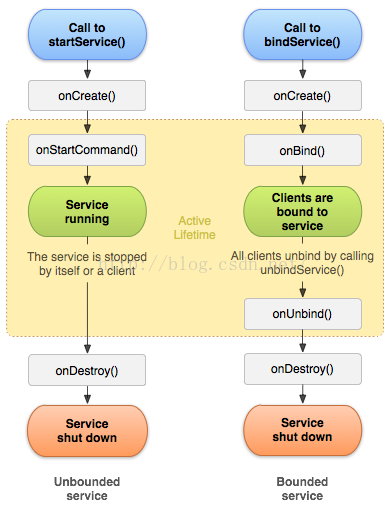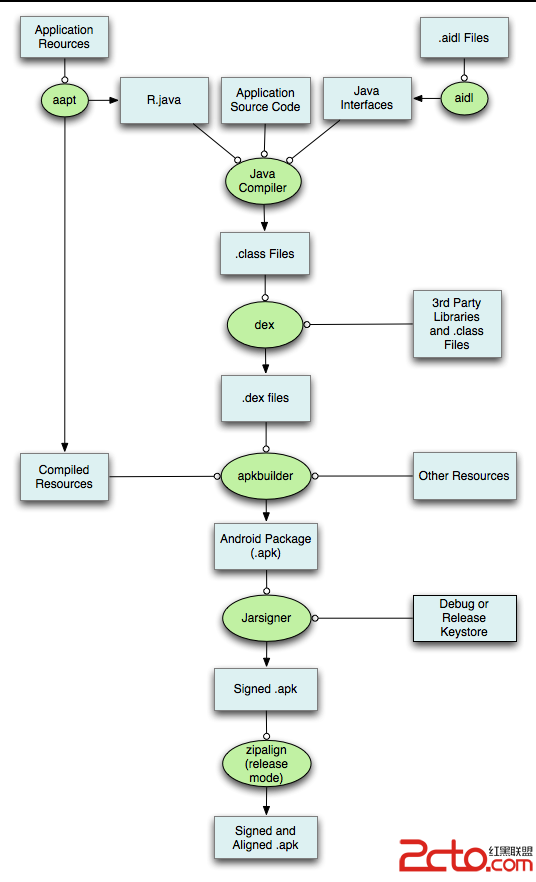編輯:關於Android編程
最近在做一個項目,客戶需要在應用成獲取臨時root權限,剛開始覺得很簡單,Android就自帶有su命令,只是沒編譯進去,想著直接編譯進去就行,就一口答應客戶1天搞好,各種加班悲劇就是這樣開始的。
先在Android源碼下找了一下,2分鐘找到su源代碼system/extras/su。修改了一下Android.mk,mmm編譯後push到系統,(我們做系統,所以很多東西可以直接改源碼),然後adb shell進入系統執行su,提示沒有權限,沒權限咱們就給權限被,於是adb root,adb remount 後再adb shell進入系統,chmod 777 /system/xbin/su,在執行su,還是提示permission denied,查看了一下su權限的確是-rwxrwxrwx沒錯,查看su源碼,其實核心就是setuid(0),了解了,su就是切換uid,所以su還得加上s位,chmod 6777 su。在執行,成功了,以為大工告成。su源碼如下:
/*
**
** Copyright 2008, The Android Open Source Project
**
** Licensed under the Apache License, Version 2.0 (the "License");
** you may not use this file except in compliance with the License.
** You may obtain a copy of the License at
**
** http://www.apache.org/licenses/LICENSE-2.0
**
** Unless required by applicable law or agreed to in writing, software
** distributed under the License is distributed on an "AS IS" BASIS,
** WITHOUT WARRANTIES OR CONDITIONS OF ANY KIND, either express or implied.
** See the License for the specific language governing permissions and
** limitations under the License.
*/
#define LOG_TAG "su"
#include
#include
#include
#include
#include
#include
#include
#include
#include
#include
void pwtoid(const char *tok, uid_t *uid, gid_t *gid)
{
struct passwd *pw;
pw = getpwnam(tok);
if (pw) {
if (uid) *uid = pw->pw_uid;
if (gid) *gid = pw->pw_gid;
} else {
uid_t tmpid = atoi(tok);
if (uid) *uid = tmpid;
if (gid) *gid = tmpid;
}
}
void extract_uidgids(const char *uidgids, uid_t *uid, gid_t *gid, gid_t *gids,
int *gids_count)
{
char *clobberablegids;
char *nexttok;
char *tok;
int gids_found;
if (!uidgids || !*uidgids) {
*gid = *uid = 0;
*gids_count = 0;
return;
}
clobberablegids = strdup(uidgids);
strcpy(clobberablegids, uidgids);
nexttok = clobberablegids;
tok = strsep(&nexttok, ",");
pwtoid(tok, uid, gid);
tok = strsep(&nexttok, ",");
if (!tok) {
/* gid is already set above */
*gids_count = 0;
free(clobberablegids);
return;
}
pwtoid(tok, NULL, gid);
gids_found = 0;
while ((gids_found < *gids_count) && (tok = strsep(&nexttok, ","))) {
pwtoid(tok, NULL, gids);
gids_found++;
gids++;
}
if (nexttok && gids_found == *gids_count) {
fprintf(stderr, "too many group ids\n");
}
*gids_count = gids_found;
free(clobberablegids);
}
/*
* SU can be given a specific command to exec. UID _must_ be
* specified for this (ie argc => 3).
*
* Usage:
* su 1000
* su 1000 ls -l
* or
* su [uid[,gid[,group1]...] [cmd]]
* E.g.
* su 1000,shell,net_bw_acct,net_bw_stats id
* will return
* uid=1000(system) gid=2000(shell) groups=3006(net_bw_stats),3007(net_bw_acct)
*/
int main(int argc, char **argv)
{
struct passwd *pw;
uid_t uid, myuid;
gid_t gid, gids[10];
/* Until we have something better, only root and the shell can use su. */
myuid = getuid();
if (myuid != AID_ROOT && myuid != AID_SHELL) {
fprintf(stderr,"su: uid %d not allowed to su\n", myuid);
return 1;
}
if(argc < 2) {
uid = gid = 0;
} else {
int gids_count = sizeof(gids)/sizeof(gids[0]);
extract_uidgids(argv[1], &uid, &gid, gids, &gids_count);
if(gids_count) {
if(setgroups(gids_count, gids)) {
fprintf(stderr, "su: failed to set groups\n");
return 1;
}
}
}
if(setgid(gid) || setuid(uid)) {
fprintf(stderr,"su: permission denied\n");
return 1;
}
/* User specified command for exec. */
if (argc == 3 ) {
if (execlp(argv[2], argv[2], NULL) < 0) {
int saved_errno = errno;
fprintf(stderr, "su: exec failed for %s Error:%s\n", argv[2],
strerror(errno));
return -saved_errno;
}
} else if (argc > 3) {
/* Copy the rest of the args from main. */
char *exec_args[argc - 1];
memset(exec_args, 0, sizeof(exec_args));
memcpy(exec_args, &argv[2], sizeof(exec_args));
if (execvp(argv[2], exec_args) < 0) {
int saved_errno = errno;
fprintf(stderr, "su: exec failed for %s Error:%s\n", argv[2],
strerror(errno));
return -saved_errno;
}
}
/* Default exec shell. */
execlp("/system/bin/sh", "sh", NULL);
fprintf(stderr, "su: exec failed\n");
return 1;
}
嘗試在app中調用
Runtime.getRuntime().exec(“su”);,居然返回錯誤su:uid5542 not allowed to su,查看su源碼
if (myuid != AID_ROOT && myuid != AID_SHELL) {
fprintf(stderr,"su: uid %d not allowed to su\n", myuid);
return 1;
}
原來是不是ROOT和SHEEL用戶不讓調用su,把這段話注釋掉,然後還是出錯,su:permission denied.這就奇怪了,明明adb shell是可以執行的,app提示還是沒有權限,查找了一些博客,說selnux權限設置問題,花了好長時間修改了還是不行,直接把selinux關掉還不行,郁悶呀,後來在發現SANSUNG還做了band,郁悶呀,z最後放棄了這種方法。
因為init進程肯定是有權限的,所以就想著寫一個services通過init啟動,這樣就有權限,app通過socket通信創建鏈接,花了兩天,編譯到系統,初見成效,決定分享下,將serivce在init.rc中啟動
services suserver /system/xbin/suserver
classs main
APP 調用方式 Runtime.getRuntime().exec(“suclient”)代碼如下:
目前還有個問題,執行ls等輸出比較多的命令時,如果頻繁執行的話,會造層service 掛掉,init要很久才能重啟這個service,原因是輸出比較多時outpuustream卡死,所以service掛了如果不執行這種命令的話目前還沒發現其他問題,因為目前也不會一直執行這種命令,所以想著以後有機會再改!
Client:
#include
#include
#include
#include
#include
#include
#include
int main(int argc, char *argv[]) {
int client_sockfd;
int len;
int i;
char sendline[17824];
struct sockaddr_in remote_addr; //服務器端網絡地址結構體
char buf[17824] = { '\0' }; //數據傳送的緩沖區
for (i = 1; i < argc; i++) {
strcat(buf, argv[i]);
printf("%s\n", buf);
strcat(buf, " ");
}
strcat(buf, " 2>&1\0");
//printf("%s\n", buf);
memset(&remote_addr, 0, sizeof(remote_addr)); //數據初始化--清零
remote_addr.sin_family = AF_INET; //設置為IP通信
remote_addr.sin_addr.s_addr = inet_addr("127.0.0.1"); //服務器IP地址
remote_addr.sin_port = htons(40000); //服務器端口號
if((argc < 2 )||(strncmp(buf,"cct",3)==0)||(strncmp(buf,"su",2)==0)){
while(1){
fgets(sendline, 17824, stdin);
if(sendline[0]==10)
continue;
for(i=0;i<17824;i++){
if(sendline[i]==10){
sendline[i]=32;
break;
}
}
strcat(sendline," 2>&1\0");
//printf("sendline :%s\n", sendline);
if(strncmp(sendline,"exit",4)==0){
return 0;
}
if ((client_sockfd = socket(PF_INET, SOCK_STREAM, 0)) < 0) {
perror("socket");
return 1;
}
/*將套接字綁定到服務器的網絡地址上*/
if (connect(client_sockfd, (struct sockaddr *) &remote_addr,
sizeof(struct sockaddr)) < 0) {
perror("connect");
return 1;
}
len = send(client_sockfd, sendline, strlen(sendline), 0);
len = recv(client_sockfd, buf, 17824, 0);
buf[len] = '\0';
if(strstr(buf,"not found")!=NULL){
write(2,buf,len);
}
else
printf("received:\n%s\n", buf);
close(client_sockfd);
}
return 0;
}
/*創建客戶端套接字--IPv4協議,面向連接通信,TCP協議*/
if ((client_sockfd = socket(PF_INET, SOCK_STREAM, 0)) < 0) {
perror("socket");
return 1;
}
/*將套接字綁定到服務器的網絡地址上*/
if (connect(client_sockfd, (struct sockaddr *) &remote_addr,
sizeof(struct sockaddr)) < 0) {
perror("connect");
return 1;
}
len = send(client_sockfd, buf, strlen(buf), 0);
len = recv(client_sockfd, buf, 17824, 0);
buf[len] = '\0';
printf("received:\n%s\n", buf);
close(client_sockfd); //關閉套接字
return 0;
}
Service :
#include
#include
#include
#include
#include
#include
#include
#include
#include
#include
#define MAXFILE 65535 // 最大的文件描述符
char* result;
long lenght = 8192;
void executeCMD(const char *cmd) {
char buf_ps[8192];
char ps[8192] = { 0 };
int i = 1;
char *result2 = NULL;
FILE *ptr = NULL;
strcpy(ps, cmd);
if ((ptr = popen(ps, "r")) != NULL) {
result = (char *) malloc(lenght * sizeof(char));
char *result2 = (char *) malloc(lenght * sizeof(char));
while (fgets(buf_ps, 8192, ptr) != NULL) {
result = (char *) malloc(lenght * i * sizeof(char));
if (result2 != NULL)
strcpy(result, result2);
strcat(result, buf_ps);
i++;
result2 = (char *) malloc(lenght * (i - 1) * sizeof(char));
strcpy(result2, result);
}
pclose(ptr);
ptr = NULL;
} else {
printf("popen %s error\n", ps);
}
}
int main() {
pid_t pc;
int i, fd;
/*
pc = fork();
if (pc < 0) {
printf("error fork/n");
exit(1);
} else if (pc > 0)
exit(0); // 父進程退出 , 這個子進程變成孤兒進程 , 由 init 進程接管 ,
*/
setsid(); // 變為後台程序
chdir("/");
umask(0); // 對所有的權限開放
for (i = 0; i < MAXFILE; i++)
close(i); // 關閉所有的不需要的文件描述符
int server_sockfd; //服務器端套接字
int client_sockfd; //客戶端套接字
int len;
struct sockaddr_in my_addr; //服務器網絡地址結構體
struct sockaddr_in remote_addr; //客戶端網絡地址結構體
int sin_size;
char buf[8192]; //數據傳送的緩沖區
memset(&my_addr, 0, sizeof(my_addr)); //數據初始化--清零
my_addr.sin_family = AF_INET; //設置為IP通信
my_addr.sin_addr.s_addr = INADDR_ANY; //服務器IP地址--允許連接到所有本地地址上
my_addr.sin_port = htons(40000); //服務器端口號
/*創建服務器端套接字--IPv4協議,面向連接通信,TCP協議*/
if ((server_sockfd = socket(PF_INET, SOCK_STREAM, 0)) < 0) {
perror("socket");
return 1;
}
/*將套接字綁定到服務器的網絡地址上*/
if (bind(server_sockfd, (struct sockaddr *) &my_addr,
sizeof(struct sockaddr)) < 0) {
perror("bind");
return 1;
}
/*監聽連接請求--監聽隊列長度為5*/
listen(server_sockfd, 5);
sin_size = sizeof(struct sockaddr_in);
while (1) // 守護進程實現的服務
{
//printf("等待連接...\n");
if ((client_sockfd = accept(server_sockfd,
(struct sockaddr *) &remote_addr, &sin_size)) < 0) {
perror("accept");
//return 1;
}
//printf("接受到一個連接:%s \r\n", inet_ntoa(remote_addr.sin_addr));
if ((len = recv(client_sockfd, buf, 8192, 0)) > 0) {
buf[len] = '\0';
//printf("%s\n", buf);
executeCMD(buf);
if (strlen(result) == 0) {
strcpy(result, "Returing is null!");
}
if (send(client_sockfd, result, strlen(result), 0) < 0) {
perror("write");
//return 1;
}
}
close(client_sockfd);
}
close(server_sockfd);
return 0;
}
 Android Service詳解
Android Service詳解
來自:https://developer.android.com/guide/components/services.htmlService是一個可以在後台執行長時間運行
 Android顯示GIF圖片
Android顯示GIF圖片
今天我們研究一下如何在Android手機上顯示GIF動態圖片 首先需要在src目錄下新建一個自定義的View,代碼如下: import a
 Android Develop:構建系統解析
Android Develop:構建系統解析
Android構建系統是你用來構建、測試、運行和打包你的app的工具集。這個構建系統能作為Android Studio菜單的一個集成工具、和獨立命令的方式運行。你能使用這
 注解框架---AndroidAnnotations
注解框架---AndroidAnnotations
AndroidAnnotations是一個開源框架,旨在加快Android開發的效率。通過使用它開放出來的注解api,你幾乎可以使用在任何地方, 大大的減少了無關痛癢的代